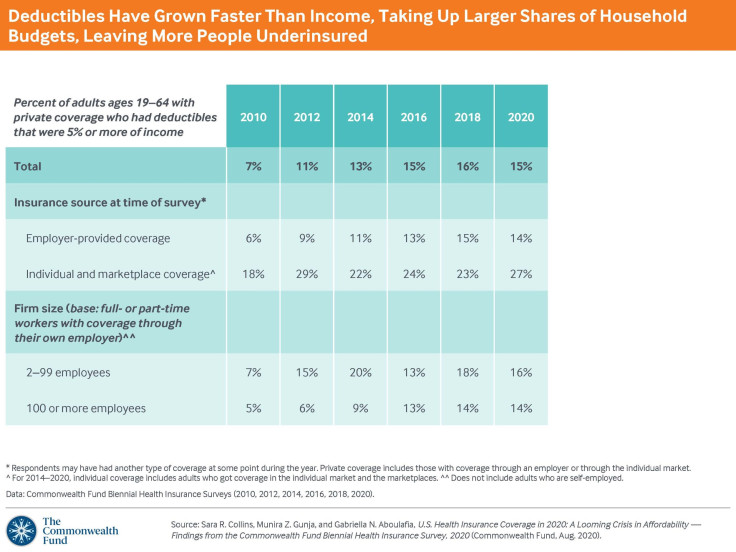Need to Move? Drug-Price-Wise, Consider These Towns

There's a new category to consider if you ever plan to relocate: what the locals pay for their prescription drugs. Folks in San Francisco pay 18% above the national average; folks in Denver pay 33.8% below. Think about that – it’s close to a 52% range. (Yes, that’s what we said, too.)
These data, compiled by the prescription platform company GoodRx, were the result of a look at the top 500 scripts written in 30 of the country’s more populated cities. GoodRx pulled for publication the top 5 most expensive places and the 5 least most expensive places.
No Rhyme or Reason
The reasons cited for the differences? Cost of living, obviously. But GoodRx also mentioned that people are getting generics, which are cheaper, from places like Costco and Walmart, or getting 90-day supplies. Denver? Who knows? Maybe it has more big box stores.
Here are the 10 cities GoodRx listed on its site. The percentages cited are all above or below the national average drug price. Below are 5 most expensive cities for prescription medications:
- San Francisco — 18.3% above
- New York City — 17.2% above
- Los Angeles — 15.7% above
- New Orleans — 13.2% above
- Milwaukee — 11.1% above
And these are the 5 least expensive cities for prescription medications:
- Denver — 33.8% below
- Houston — 20.9% below
- Atlanta — 19.9% below
- Cincinnati — 17.7% below
- Salt Lake City — 16.3% below
Prices for Specific Therapies Also Out of Reach for Many
GoodRx also looked at those therapies that cost the most. Not one of them is for the common cold, or the common anything for that matter. Some are one-time only gene therapy treatments; most have to be given by a physician. One thing is clear though: without insurance, or the drug manufacturer’s copay assistance, these drugs – the cheapest, at $633,325 a year – are likely out of reach for most of us. You can find the list at the bottom of the story.
We can say out of reach because of a new report from the Commonwealth Fund that shows 2 in 5 working-age adults in this country did not have steady insurance coverage from January to June 2020. More than one-third had a rough time paying their medical bills. The survey included 4,200 working-age adults nationwide.
The Commonwealth Fund, a nonprofit organization that helps support health policy research, found:
- 43% were either uninsured or had unstable insurance
- 9.5% had coverage gaps
- 21% were essentially underinsured because the out-of-pocket costs or the deductible, as compared to their income, were so high
The Pandemic Adds to Problems
The pandemic only added to these people’s insurance needs, said David Blumenthal, MD, president of the Commonwealth Fund. The survey found that in the last decade, the percentage of adults who had private insurance and who paid $1,000 or more for their deductible rose from 22% to 46%. "Even before the pandemic, people were struggling with inadequate health coverage and mounting medical debt. It has never been more important to ensure that all U.S. residents have affordable, comprehensive coverage to survive this pandemic and beyond," he said in a press release.
Other findings included 25% of adults, who had an employer plan, were underinsured. An equal percentage, even if they had adequate coverage for 12 months, said they had trouble paying medical bills for the prior year.
And now for those drugs.
- Zolgensma — $2,125,000 (AveXis) This 1-time dose gene therapy is for children under 2 with spinal muscular atrophy.
- Myalept — $855,678 (Amryt Pharma) This is a hormone replacement medication for those with short bowel syndrome. Those with SBS normally need intravenous feedings at least 3x a week.
- Luxturna — $850,000 (Spark Therapeutics) Another gene therapy treatment, the first FDA approval in its class, is indicated for certain blinding genetic diseases of the retina.
- Folotyn — $793,870 (Acrotech Biopharma) An injection, Folotyn is approved for patients whose T-cell lymphoma has returned or just won’t go away.
- Brineura — $716,040 (BioMarin Pharmaceuticals) Brineura is a approved to aid children diagnosed with Batten disease, a fatal neurological disorder. Injected into the fluid of the brain, the medication slows the disease’s assault on the child’s ability to crawl and walk.
- Soliris — $678,392 (Alexion Pharmaceuticals) Soliris treats people with a particular type of a rare inflammatory process called NMO, or neuromyelitis optica. The myelins, the protective sheath around the nerves, are the most vulnerable to NMO.
- Blincyto — $672,968 (Amgen) Blincyto is an immunotherapy treatment that works to get the patient’s own immune system to recognize and destroy the acute lymphoblastic leukemia cancer cells within it.
- Ravicti — $664,092 (Horizon Therapeutics) This treatment contains nitrogen-binding molecules that attract the excess ammonia in the body of those patients with urea cycle disorders.
- Lumizyme — $643,243 (Sanofi Genzyme) Lumizyme is a biweekly injection that treats Pompe disease, providing a replacement for a missing enzyme that normally breaks down sugars in the body, sugars that provide energy to an important muscular organ, like the heart.
- Actimmune — $633,325 (Horizon Therapeutics) Another injection, Actimmune helps treat chronic granulomatous disease, an inherited disorder in which certain cells of the immune system are rendered useless, leaving the body susceptible to infections from some bacteria and fungi.



























